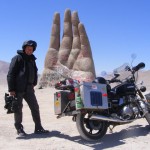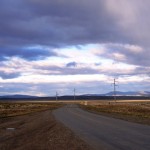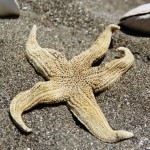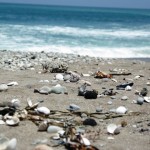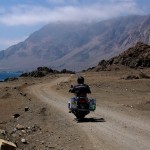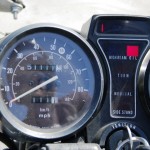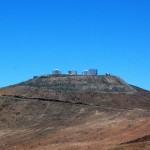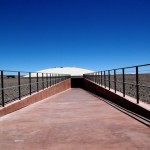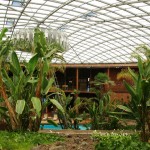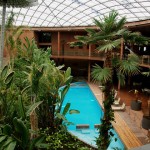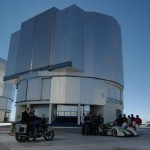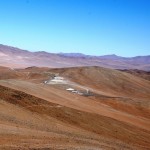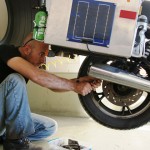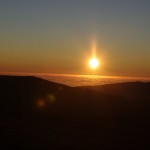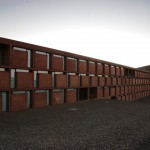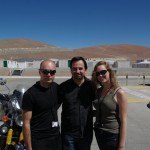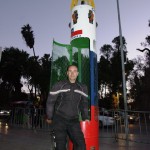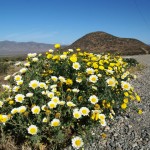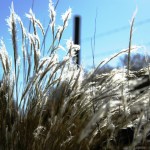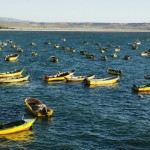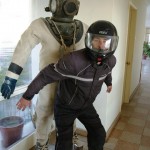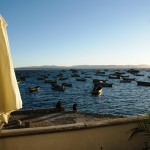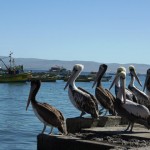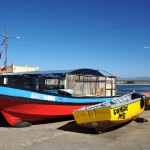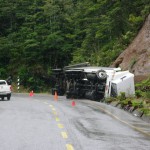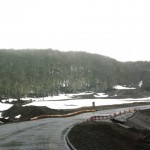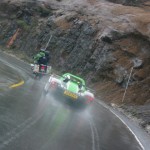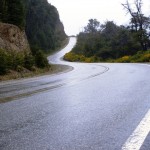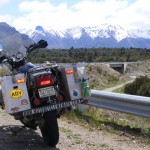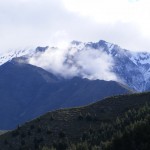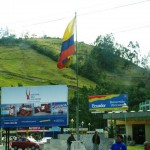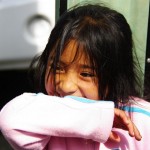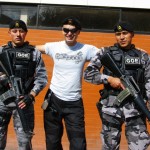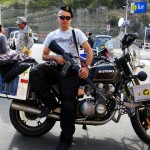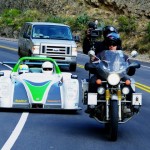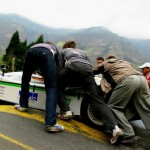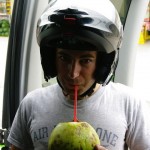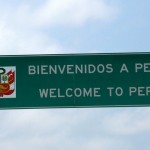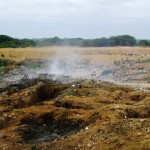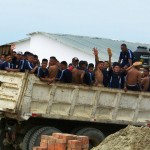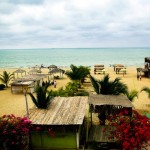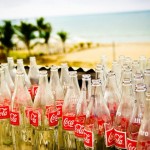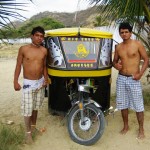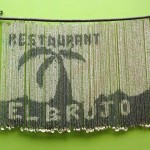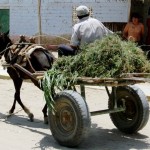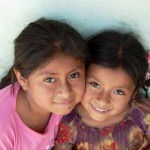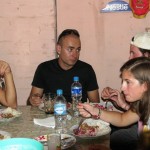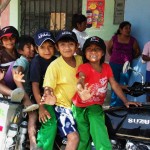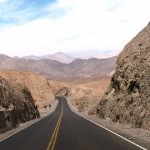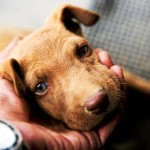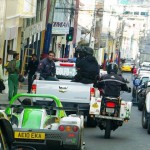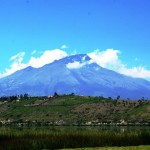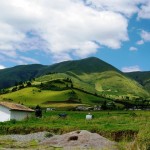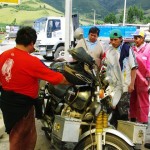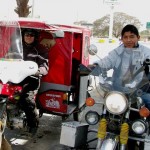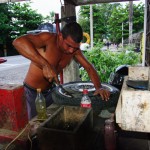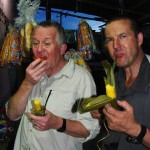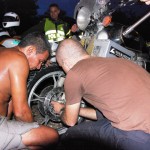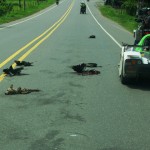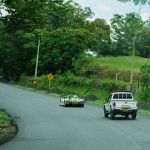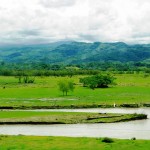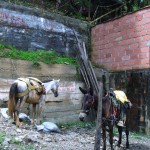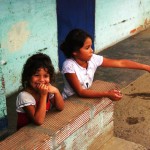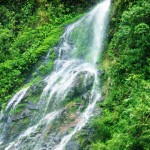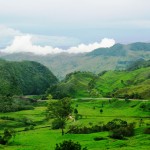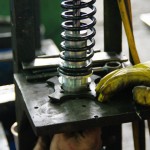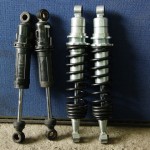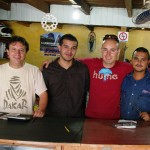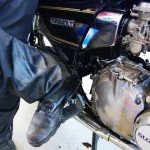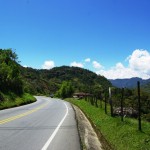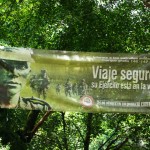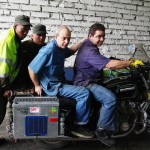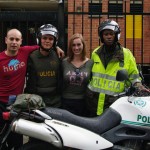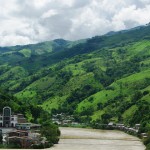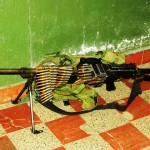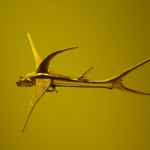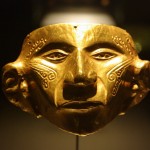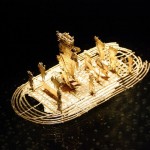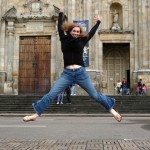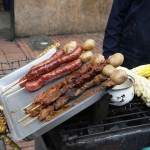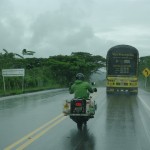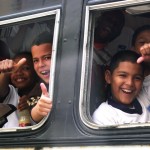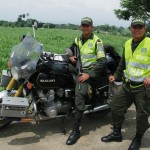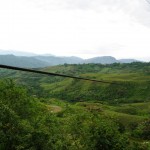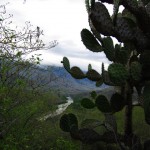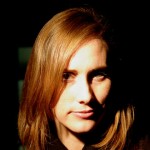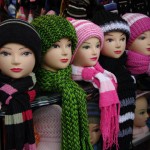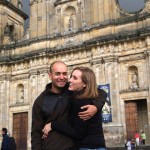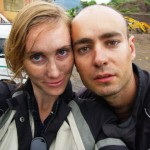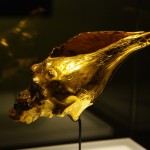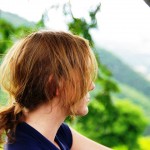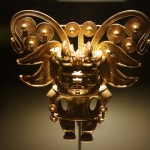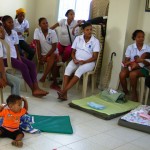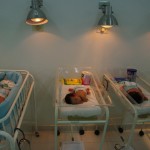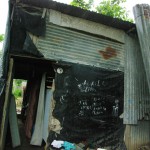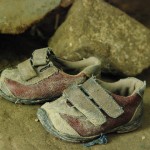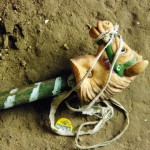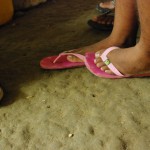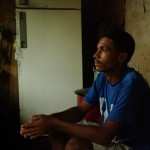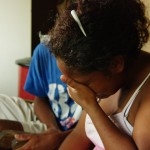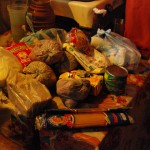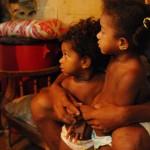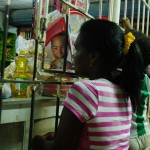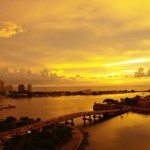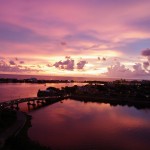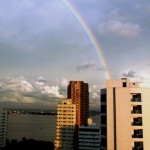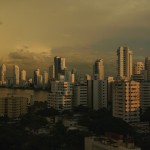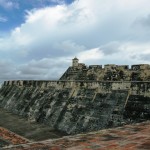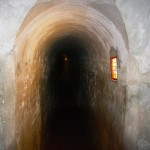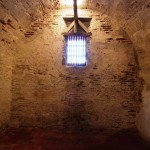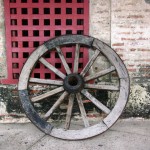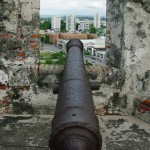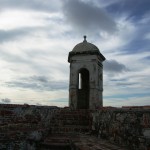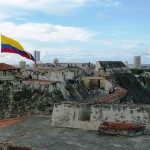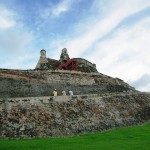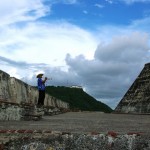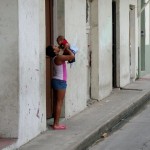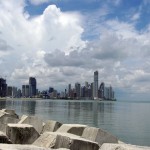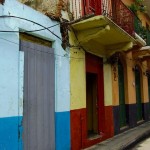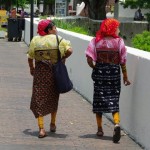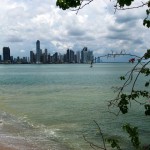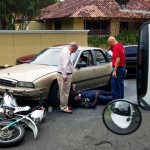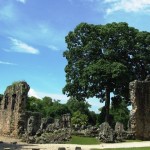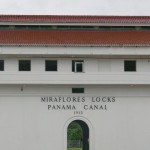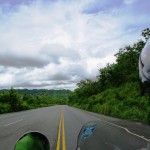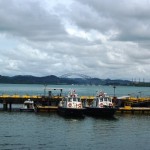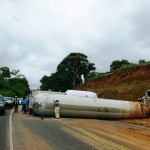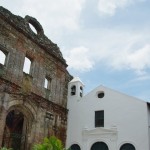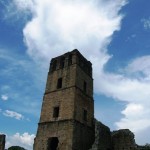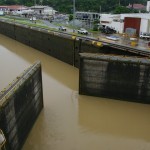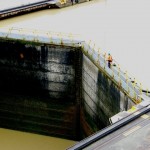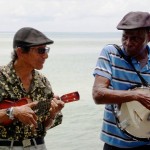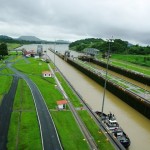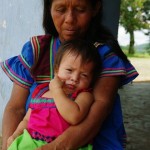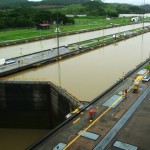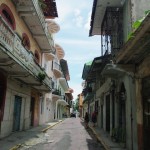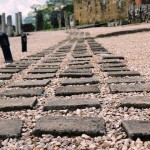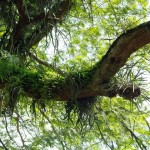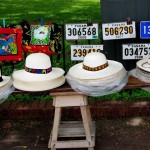Lima marked the last big civilization in Peru, and the worst traffic I’ve ever seen in my life. In the first hour entering Lima, the SRzero ran into a semi-truck in the mayhem and broke the rear fiberglass fender. The RGE guys fixed the car in no time, and soon we entered Chile, to attempt crossing of the Atacama Desert, the driest place on earth. Ever since we left Ecuador, seeing a tree was like a Bigfoot sighting and the Atacama was living up to its name. Occasional desert flowers and green moss were signs of underground waters, but they were far and long in between. Even cactus were few and far in between in certain areas of the desert. Atacama is a giant desert, and it is a fascinating place. In the day time, the temperatures soared to the point that asphalt started to melt, and at night they dropped down to freezing.
To say that the region is dry is an understatement. My rear tire was down to almost nothing, but considering the impossible chances of precipitation, I chose not to change it until it was gone completely. We continued along a mostly flat moonscape which seemed to go on endlessly, but would occasionally wend along and down into fantastical yawning canyons.
Despite having to have the bike inspected and the entire van unloaded to x-ray all the contents at the border, we made it out of Peru and through Chile in a record-breaking time. Chile is unlike all other Latin American countries. The European and in particular, the German influence, is tremendous, and all the natural resources have made this very long country a success in the relatively poor South America. We proceeded to Arica, a coastal town with more German flags than Chileans, and we promptly got lost. Through most of Central America and some of Colombia we had police and/or contacts meeting us and escorting us from point A to point B, but now as we were traveling independently, we were to experience travel the way most people do, which I much prefer. The RGE guys usually set up the route and chase Google maps on their Ipads religiously as we follow along, but occasionally I had to turn on the GPS to help us find our way back to the right direction.
Just like In Oaxaca, Mexico, we got stuck behind a strike in the middle of the highway which was in this case for a customs checkpoint. Again we could get around the ordeal on the motorcycle, but the SRzero and the van had to wait out the festivity. Claudio was so dead tired that he slept right on the side of the road while I used the time to go fishing and Cynthia picked up shells. When the road cleared up, Cynthia got on the back of the bike, to her delight, and Claudio slept in the van. Since there was no filming to do, we went ahead and took our time fishing and stopping for pictures while the slow pokes followed behind. In all of our time on the road, I have never seen so many pick-up trucks. In fact, pick-up trucks are rather rare in much of Central and South America. However, there seemed to be almost more pick-ups than cars which we found out later belonged to the miners.
At around 5 pm, we arrived at the mining town of Antofasto and waited at the entrance for the rest of the guys to catch up. We waited an hour and half with no sign of them with the temperatures dropping as sunset approached. Around sunset we gave up, and drove into town looking for internet to email the guys and get some food. Claudio wrote to say that they stopped about 80km before Antofasto as the car ran out of charge and to just get a hotel and let them know where to find us in the morning.
We considered sleeping on the beach as there is no shortage of coastline, but A. we didn’t have our camping gear with us as everything was in the van, and B. the locals strongly cautioned against this, saying that the area was quite dangerous. Thus began a three hour ordeal to find a hotel as apparently during the week, the hotels are all full from all the miners and business people. We even had one hotel call other hotels for us, but there was only one room vacant and it was $250. I was very tired and sleepy and not happy to have to drive back to Mejillones where the rest of the group was, but not wanting to pay a fortune for a night sleep, we started on the way out of town, when Cynthia spotted a tiny motel which looked promising.
As we rode inside the gate, a plump lady ran towards us and asked us “How many hours?” All night was the answer. I had my own girl with me otherwise she would have supplied the lady for the night as well. The whorehouse was” homey” and cheap, and we had our own private garage. We rented a pink room with hardwired speakers that played love songs all night. It even had a sighting window with light in it for peep show I suppose. Now that we had our room, we went back into town to email Claudio our address and GPS coordinates for the next day, and on the way back the clutch cable broke. Again. Thankfully, I had a spare bare cable which barely worked with some heavy modification. When I closed my eyes it was 2 am already.
Paranal Observatory
Much of the area looked liked Mars, with no humidity or even a cloud in sight. That’s why 14 European countries got together, and built the largest and most impressive observatory on earth in the middle of the Atacama Desert. The European Southern Observatory (ESO) or the Paranal is the one and only in the world, and we had the privilege to visit it. The last James Bond movie was actually shot there, and if that wasn’t enough to persuade us to go there, we were offered to stay at the observatory overnight, and would get a tour of the inside of the telescopes at night to see the far far away galaxies.
The roads to the observatory weren’t marked, and we had a hell of a time finding our way there. The sun burnt through my black riding gear and the engine felt like a million degrees in between my legs. We asked for directions three times, and every time they sent us on a wild goose chase. After much frustration, we finally found the road and started to climb high up in the desert until we could go no further.
Paranal’s remote location was selected due to the unique feature of being one of the least humid and driest places on earth which makes for ideal clear skies for the telescopes. While checking in and getting our ID badges, we were told that tourists could only visit on weekends but were not able to stay overnight or go up to the observatory at night. Being able to stay at the observatory where the workers and visiting astronomers stay was a pretty big deal. The site has many workshops and storage buildings clustered together. Towards the West is a large object that looks like a Frisbee or a giant UFO sitting on top of the earth. We descend down the path into the disc and found ourselves in a man-made oasis with tropical trees, birds, flowers, vines and a pool in the middle. Inside the bubble, there was a cafeteria that served delicious food, made by world class chefs, and the James Bond hotel consisted of three stories of bedrooms where the astronomers stayed. On the hill several kilometers above the bubble was the observatory.
Despite the amazing location, I had to put aside any thoughts of relaxation as the bike was in desperate need of some TLC. I was pleased that they had a workshop where I could change the bald rear tire and the oil. The kind mechanic gave me free oil and the complete use of his shop. I arrived at the Paranal on an empty tank, (gas stations are few and far between in the desert and getting lost three times to find the place didn’t help) and was grateful that they generously filled up my fuel tank as well. In the evening, we went up the hill with the group to look at the stars and the observatory. It was almost impossible to see any black sky due to the infinite number of brightly glittering stars. The view was truly spectacular. We went inside for a tour of the control room of the observatory and were able to see the image of a far-away star pulsating on the computer screen. However, frankly it was disappointing. We thought we were going to peer through the telescope and see many stars up close, but apparently they don’t do that. Computer screens are what they spend their time on, but it was a great experience nevertheless.
In the morning I finished up the maintenance on the bike, and we headed out into Atacama again. While it was somewhat warm at the Paranal, it became bitingly cold and windy as we descended down to the valley, so we bundled up like Eskimos. Surprisingly we started to see more signs of life as the road came closer to the coast again and we started to catch glimpse of patches of green interspersed amongst the rocky terrain along with cactuses and various desert wildflowers in purple, yellow, and white. After so many days of sand, dirt and rocks, these little bits of green seemed to be from a Technicolor dream. I wanted to eat the flowers rather than looking at them! Eventually we made our stop in the sleepy little fishing village of Tongoy at a seaside hotel situated directly on the water. With furnishings straight out of a 1950’s time capsule, the hotel had a sunny, airy feel to it with floor to ceiling windows and view of the Pacific dotted with bobbing yellow fishing skiffs, pelicans, and seagulls, as well as a perfect sunset. We weren’t disappointed to find out that due to the low amperage electricity, the SRzero would not be fully charged in time to leave in the morning which meant that we could enjoy a rare full rest day in this delightful locale.
Out Of Chile
It was 9 a.m. by the time we headed out of Tongoy and headed for Santiago. The morning started out overcast and very cold with Claudio back on the bike. As we rode on, the landscape gave way to more eucalyptus and fir trees and the roadsides were lined with clumps of yellow flowers. We arrived in Santiago by late afternoon and promptly got lost again. Santiago is the capital of Chile and is nestled at the base of the Andes Mountains. It is a very modern, fashionable and wealthy city, and its culture is more regimented in following procedures and rules. Chile is the only country in South America that you can’t bribe the government officials including the SS looking police. Their uniform was straight out of the 1940’s Nazi Germany with pea-green long trench coats, high leather boots and gloves. In fact they were very strict and not once did they cracked a smile. After so much freedom in all other countries, Santiago seemed very uptight and didn’t feel right.
We had a few days in Santiago to cool our jets and do some work. I celebrated my 29th birthday by spending a fun relaxing day with Cynthia. This was the first time that we were able to enjoy a stop in a big city for a few days WITHOUT having to do any maintenance to the bike. Chile has a strong economy and is one of the top Latin American countries for security. Chile has eradicated malnutrition through extensive government efforts, and several locals that we talked with were quite proud to share how the government provides fortified split rice which is used to make soup for elderly pensioners which has actually, along with the fortified milk, helped to increase longevity in the elderly. On Wednesday, the RGE team, Paul, and Cynthia left to Talca. Claudio and I stayed back in Santiago to wait for Claudio’s replacement video camera to arrive via UPS from the UK. The next day we tried to pick it up only to discover that Claudio would be required to pay an exorbitant customs fee ($700 USD and hire a customs broker to get his own camera out of the greedy hands of the Chilean customs officials). We said, “Hell no,” and rented a camera instead, and headed out to catch up with the group in Talca. The drive down got progressively more beautiful as the very green countryside was dotted with vineyards, trees of all sorts, and loads of yellow flowers along the roads and in the fields. With the view of the white-capped Andes in the eastern horizon, we slowly traversed the longest country on the map towards Argentina.
